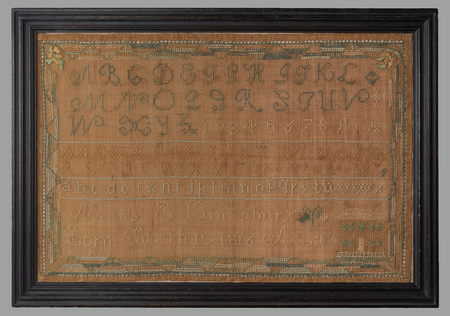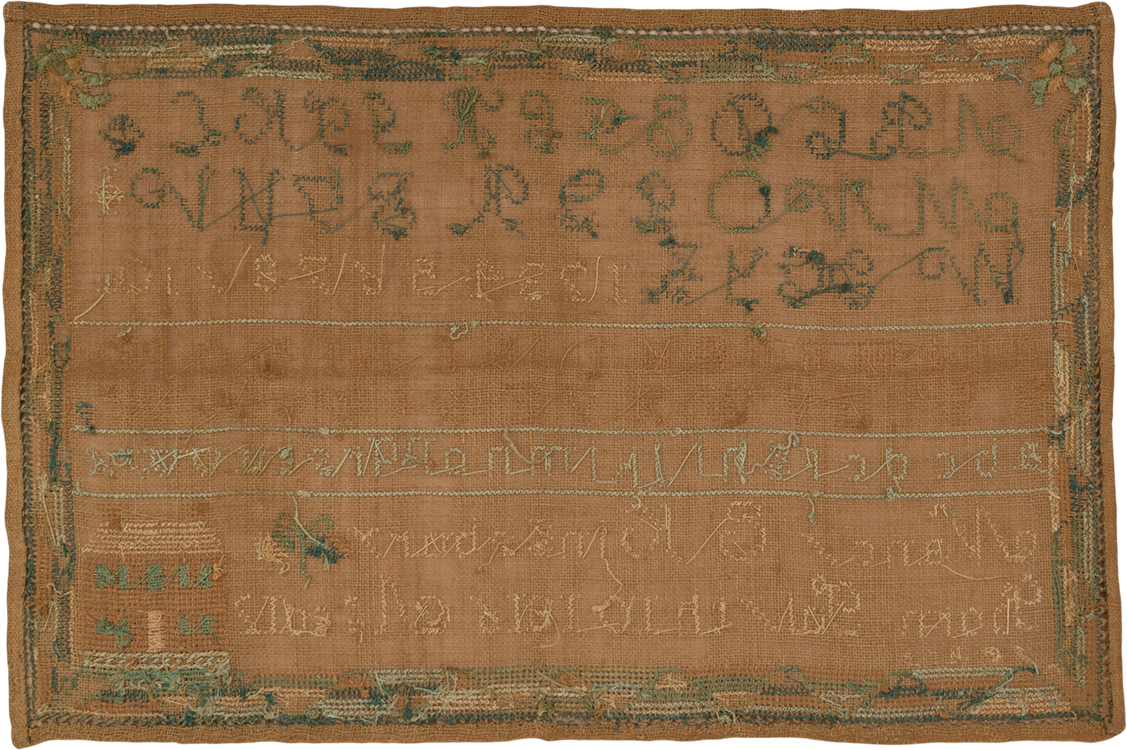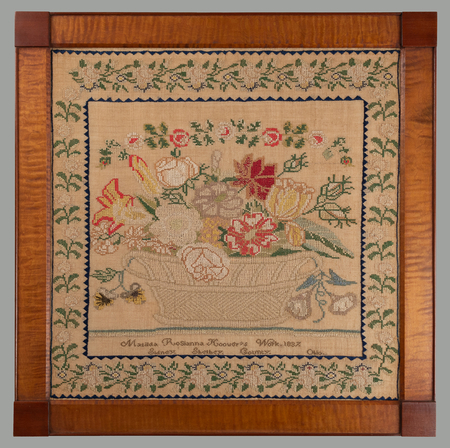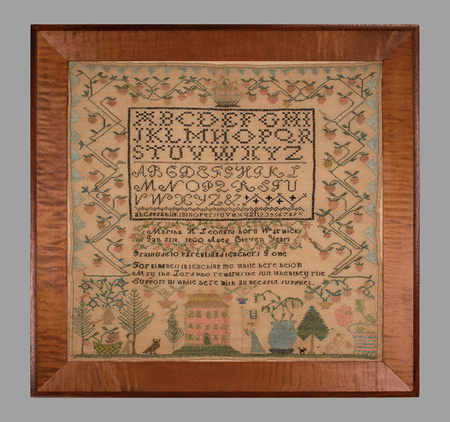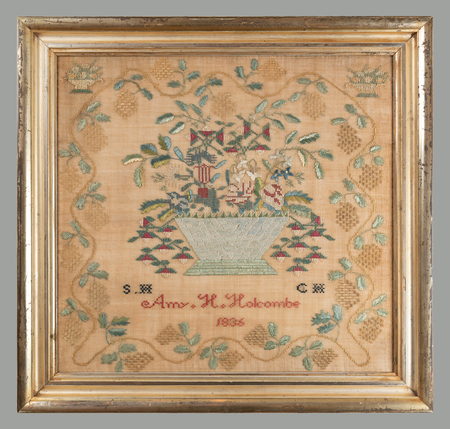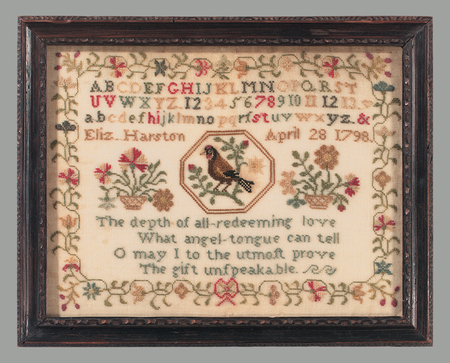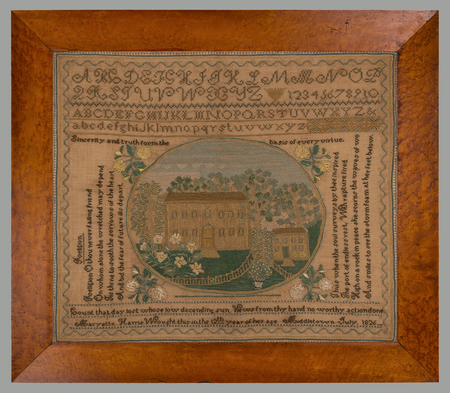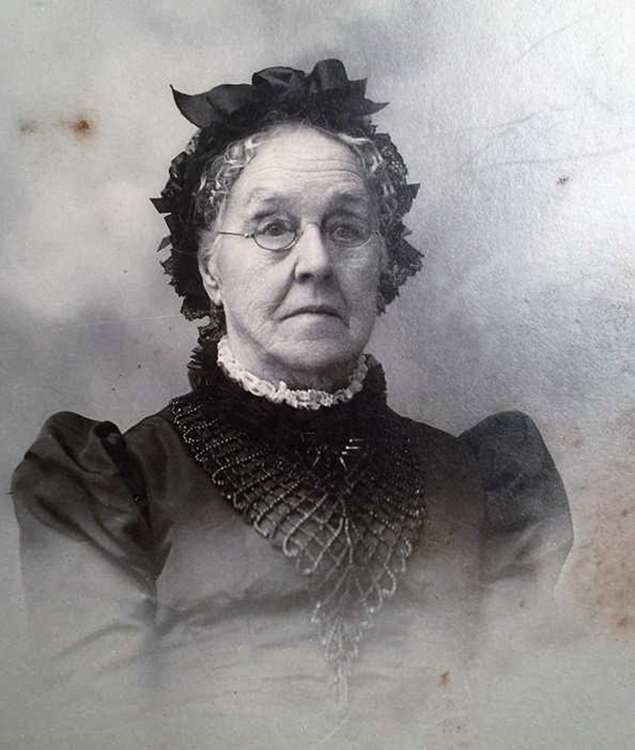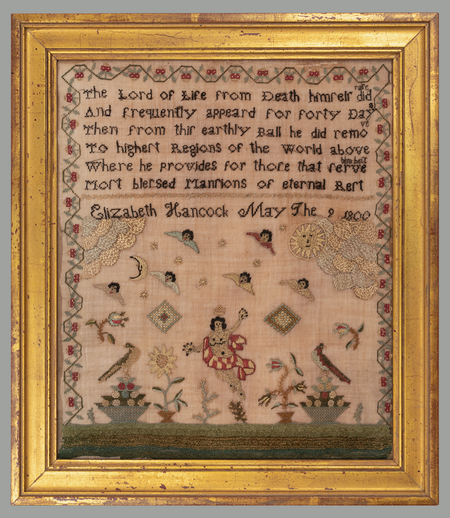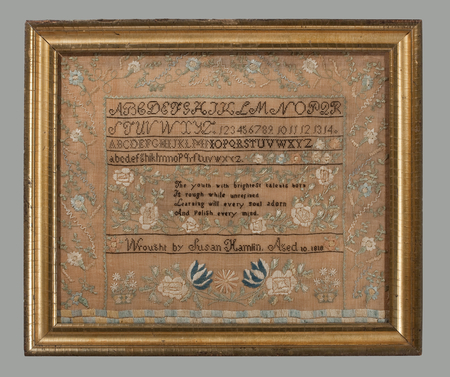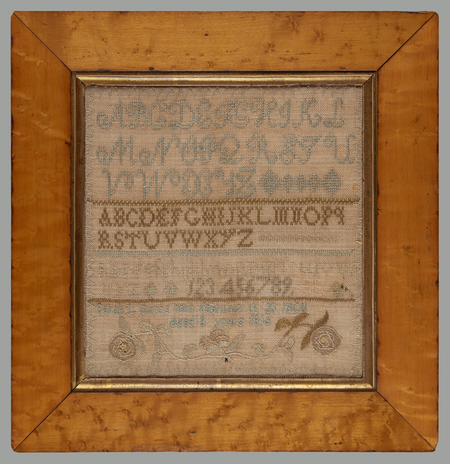Mary Lippincott
Burlington County,
New Jersey, 1821
Mary Lippincott
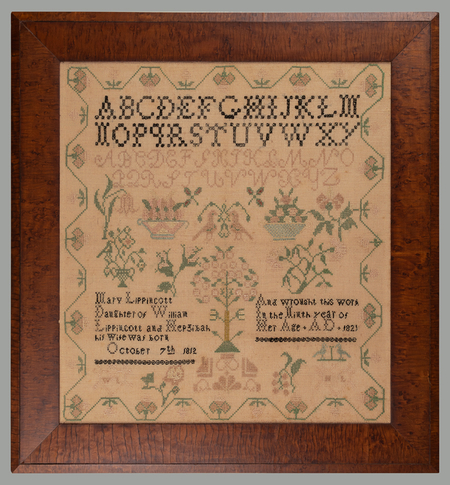
This is an excellent Quaker motif and alphabet, signed, "Mary Lippincott Daughter of William Lippincott and Hepzibah his Wife was born October 7th 1812 And wrought this work In the Ninth year of Her Age AD 1821." In the lower corners (inside the border) Mary stitched the initials of her parents inside little hearts - WL and HL.
Arranged in a balanced composition, the motifs include many of those taught at Friends schools in New Jersey and Pennsylvania in the first decades of the 19th century.
As she stitched on her sampler, Mary was born on October 7, 1812. She was the 9th of 13 children of William and Hepzibah (Gaskill) Lippincott of Burlington County, New Jersey. The Lippincott family is one of the earliest and most highly regarded Quaker families in the Pennsylvania and New Jersey area. Richard Lippincott (1613-1683) arrived in Massachusetts in 1639, and by 1666 the family was living in New Jersey. Lippincott Five Generations of the Descendants of Richard and Abigail Lippincott by Judith T. Olsen (The Gloucester County Historical Society, 1982), published much about the family. Mary's grandfather was Arney Caleb Lippincott (1742-1806), a particularly prominent Burlington County Quaker. A substantial file of research accompanies this sampler.
Mary married Thomas W. Ivins in 1834 and they had three children. Thomas served as a member of the New Jersey General Assembly. Mary died in 1885 and is buried along with family members in Jacobstown Methodist Episcopal Cemetery in Burlington County.
The sampler was worked in silk on linen and is in excellent condition. It has been conservation mounted and is in its fine, original bird's-eye maple frame.



